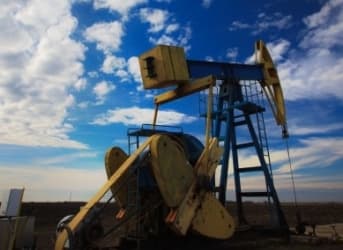This week starts with a refreshing call by Deutsche Bank (DB), which basically encapsulates my view on the E&P group. Notwithstanding the valuation issues in the group that remain significant, there continues to be ample evidence that $55 oil does not support production increases in either 2015 or 2016 for that matter.
To reiterate, my view, which DB essentially shares, is that virtually all E&P company cash flows aren’t sufficient to support increases in capital spending. Most, through 2015, are out spending operational cash flow even with reduced capital spending. To further the point, most E&P companies are well hedged in 2015 (over 50 percent) thus their effective oil price is much higher than spot or strip pricing. Related: Terawatt Solar Farms By 2050?
Thus, when hedges roll off in 2016, the cash flow situation will grow worse and so will the breakeven price for them to support increased capital spending. The 20 percent reduction in drilling costs will offset some of the loss of hedging but not all, as most hedges are in the $70s, well above the current $60 spot price and strip. Both Deutsche Bank’s and my research continues to support $70 as the price whereby production can be added as supported by cash flow. They believe at $72 operation cash flow will only equal capital spending for oil producers in 2016/2017.
The ease with which this can calculated, plus what was said on their first quarter conference calls, makes us wonder what the basis of the Goldman Sachs’ (GS) call is, while rendering it as nonsense motived by more than fundamental research. It just cannot be that someone who studies this day in and day out can miss the simple math yet, not only has GS missed it, they have gone to the other extreme by saying oil “must” fall to $45 by summers’ end to balance the market. Related: Investors Turning Away From Green Energy
DB states that, by 2017, the call on US production will grow to 1 million barrels per day (Bbls/day), as depletion math dictates, and major fields that began development in June 2014 will fall in 2015 again and be well below 23 year average. That ties in well with prior thoughts that the oil market may end this downturn, like others, in a huge deficit on the supply side.
Months ago, The Saudis sounded the same alarm about the urgency for oil producers to continue to support capital spending despite low prices. The problem is, with high debt levels on US producers and their not being government entities, with virtually unlimited borrowing capacity or reserve use, they simply cannot fund operational growth. The stronger ones, like Pioneer Resources (PXD) can, and maybe the majors too, but not the smaller independents. That is why reality will set in and by the second half of this year, ahead of the fall credit determination, the smaller ones will be forced to sell outright or begin to monetize low-growth assets. Related: Which East African Nation Will Win The LNG Race?
On a separate note, this morning Cornerstone Analytics points out something that was missed in earlier analysis. The “missing oil” phenomena began to expand on global basis exactly when oil peaked and the US dollar began to fall. Another coincidence? This “miscellaneous to balance” adjustment shows up in the EIA weekly data analysis as a supply adjustment, if one wants to check it. It should be noted that it started at a small number in 2014, then accelerated and grew from there to nearly 20 million Bbls/day cumulatively so far in 2015 alone. In the world of calculated propaganda, nothing is coincidental.
Oil will likely be range bound until either the EIA or IEA capitulate on their figures by restating them and thereby showing the supply/demand balance as much tighter or, production falls off reducing the stated US oil inventory. Another option is the US dollar falls in reflection of the recession we are currently in, or about to enter, and the nonsense of raising rates later in 2015 gets rebuked.
By Leonard Brecken of Oilprice.com
More Top Reads From Oilprice.com:
- European Oil Companies Throw Coal Under the Bus
- The Evolution Of The Oil Weapon
- How Long Can OPEC Maintain Its Current Strategy?


















